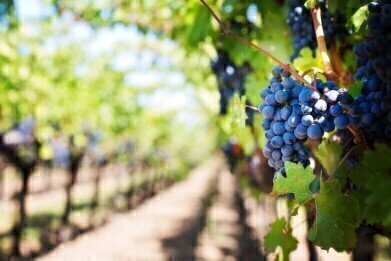HPLC, UHPLC
How to Slow Grape Ripening for Better Wine Using Chromatography
Jul 17 2021
Whether you’re a chianti connoisseur, partial to a pinot grigio or just happy whenever your glass is full, wine is enjoyed by people across the globe for its diverse depth of flavours. Not to mention the social lubricant that comes with them.
But how do the best wines achieve those all-important floral notes and fruity undertones? The secret is not only in the grapes, but also how they’re ripened.
Slow and steady wins the taste
Grapes that ripen slowly have more time to let sugars and aromas develop. The result is a tastier grape and, in turn, a more flavourful wine. Unfortunately, that’s not always possible, especially with the impact of climate change. Grapes that are grown in conditions which are too hot or dry will ripen faster, producing wines which have a higher alcohol content with a dull colour and less desirable flavour.
With vineyards across the globe experiencing higher temperatures and even droughts, winemakers (and the researchers that help them) are having to find new ways to grow the right grapes at the right speed.
Some have turned to new grape varieties. Some varieties may be better equipped to grow in warmer, drier conditions, meaning they’re less affected by the weather. However, while this will sidestep the difficulties of harvesting grapes in difficult conditions, it will undoubtedly have its own impact on the finished product, with a new variety of grape transforming the final flavour.
Is there another way?
Researchers from the University of Adelaide wanted to find out whether there was a way to grow the same grapes but alter the way they’re grown to slow ripening. They used Cabernet Sauvignon grapes from a Californian vineyard and split them into four groups:
- A – High crop load with standard irrigation
- B – Low crop load with standard irrigation
- C – High crop load with late irrigation
- D – Low crop load with late irrigation
Group A was the control group, left in the usual growing conditions. Group B had grape clusters thinned, group C had irrigation increase late in the season, and group D had both variables altered.
They then monitored the development of secondary metabolites (responsible for flavour) using gas chromatography-mass spectrometry and high-performance liquid chromatography (HPLC). Making this method more convenient and effective is discussed in the article, ‘Experience and Applications of a New Portable HPLC Machine’.
Delayed ripening, better flavour
By intentionally thinning the grape clusters and irrigating them late in the season, researchers were able to delay ripening by around three weeks. That led to a decrease in green aroma compounds, while the concentration of monoterpenes and norisoprenoids was increased.
In turn, researchers identified a positive impact on grapes’ phenolic composition with higher anthocyanin, phenolic, quercetin glycoside and polymeric pigment content. In simple terms, that means a positive effect on the compounds that affect a wine’s taste, colour and mouthfeel.
Take that, climate change!
Digital Edition
Chromatography Today - Buyers' Guide 2022
October 2023
In This Edition Modern & Practical Applications - Accelerating ADC Development with Mass Spectrometry - Implementing High-Resolution Ion Mobility into Peptide Mapping Workflows Chromatogr...
View all digital editions
Events
Apr 28 2024 Montreal, Quebec, Canada
May 05 2024 Seville, Spain
May 15 2024 Birmingham, UK
May 19 2024 Brno, Czech Republic
May 21 2024 Lagos, Nigeria














